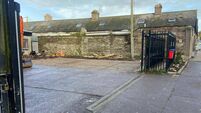Severe flooding - Climate change hits home
Any lingering doubts on that score have been drowned by the rising flood waters of recent times, and again over the weekend when severe flooding occurred across the country. The inescapable conclusion is that climate change is a fact of life in Ireland.
Following the costly debacle in Newcastle West, where homes and business premises were swamped in a matter of hours by a flash-flood, swollen rivers burst their banks over the weekend as torrential rain fell in the North and the Republic.














